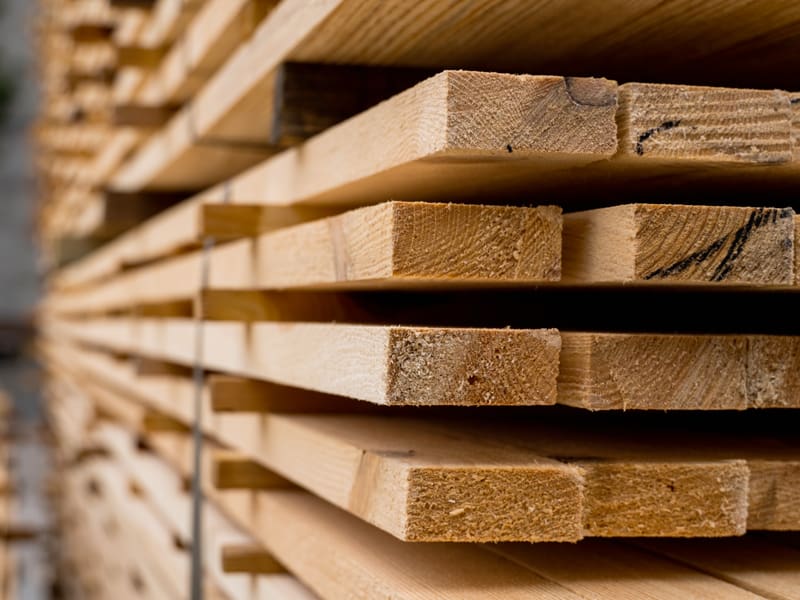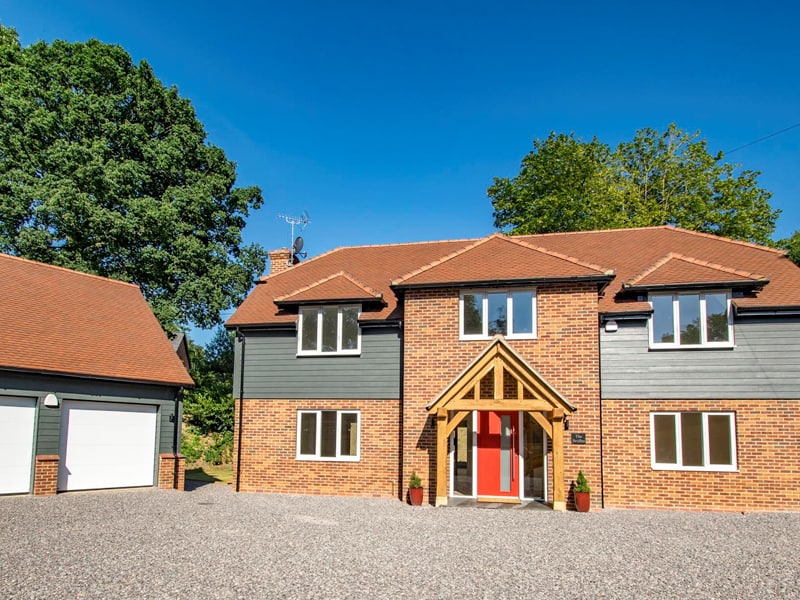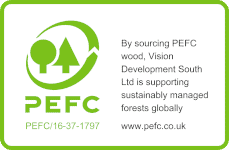Timber frame homes and why they’re cheaper to build than masonry
Timber frame homes and why they’re cheaper to build than masonry
When it comes to building a home, one of the most significant decisions you’ll make is choosing the construction method. This is guided by a number of factors, including cost, time, quality, and the physical characteristics of the construction method. Timber frame and masonry are two of the most popular options, each with its own set of advantages. However, when it comes to cost-effectiveness, timber frame homes often come out on top. Here’s why timber frame homes are generally cheaper to build than masonry construction.

Material Costs
Timber is typically cheaper than bricks, blocks, and mortar used in masonry construction. The price of timber can vary depending on the species of wood, but it generally remains more affordable compared to masonry materials. Moreover, timber is a renewable resource, which means it’s more readily available and can be sourced more sustainably, further driving down costs. In contrast, masonry materials often require extensive processing and transportation, adding to their overall expense.
Use our Self Build Cost Calculator to find out more about building timber frame homes.

Speed of Construction
Timber frame homes can be erected much faster than masonry homes due to the off-site assembly process of timber frames. The frames are then transported to the site for quick assembly, significantly reducing labour costs and construction time.
The quick turnaround of timber frame construction not only reduces labour costs but also minimises financing costs, as the construction phase is shortened.

Labour Costs
Timber frame construction is less labour-intensive than masonry. With timber frames, much of the work is done off-site in a controlled environment, which reduces the amount of time skilled labour is needed on-site. The reduced time required on-site translates directly into fewer labour costs.
Masonry construction, on the other hand, requires a higher number of skilled workers on-site, who command higher wages.

Foundation Requirements
Timber frame homes are lighter than masonry homes, which means they typically require a less robust (and less expensive) foundation. Masonry construction, being much heavier, often necessitates a more substantial and costly foundation system to support the weight. The difference in foundation requirements can make a significant impact on the overall cost of construction, particularly on sites where soil conditions may necessitate even more extensive foundations for masonry homes.

Energy Efficiency
Timber frame homes are often more energy-efficient than masonry homes due to the inherent insulating properties of wood. Timber has a lower thermal conductivity than brick or concrete, meaning it retains heat more effectively. This can lead to lower heating and cooling costs over the lifetime of the home.
While this doesn’t directly impact the initial construction cost, it is an important consideration for overall cost-effectiveness. A timber frame home’s energy efficiency can reduce the need for additional insulation and other energy-saving measures that might be necessary in masonry construction, further lowering the initial build cost.

Design Flexibility
The adaptability and robustness of timber frames make them ideal for tailoring to specific layouts and design requirements. Whether you need custom features or unique structural elements, timber frames can be adjusted to suit your individual needs. This flexibility can reduce the amount of material needed and streamline the construction process.
Find out more in our blog Timber Frame Buildings Offer Design Freedom.

Environmental impact and Long-term Value
Timber is a sustainable, renewable resource with a smaller carbon footprint compared to masonry materials like concrete and brick. For environmentally conscious builders and homeowners, choosing timber can also lead to eligibility for green building incentives, which can further reduce costs.
While the environmental impact may not directly affect the initial construction budget, the long-term value of a timber frame home, including its energy efficiency and potential for green certifications, can make it a more cost-effective choice overall.
Timber frame homes offer numerous cost advantages over masonry construction, from lower material and labour costs to quicker build times and reduced foundation requirements. While both methods have their merits, timber frame construction is often the more budget-friendly option for those looking to build a new home without compromising on quality or design flexibility. Whether you’re a first-time builder or looking to expand your property portfolio, a timber frame home can provide excellent value for your investment.













